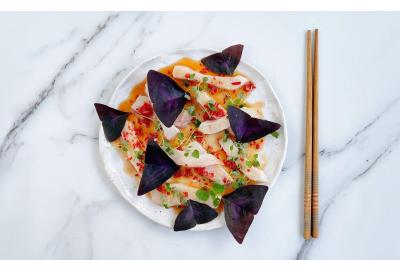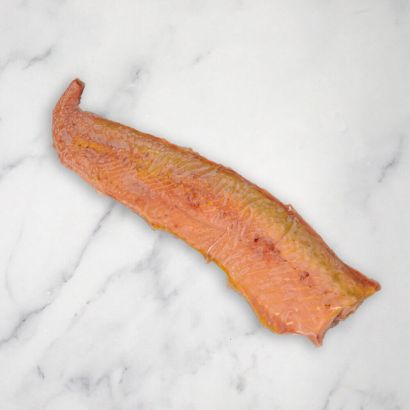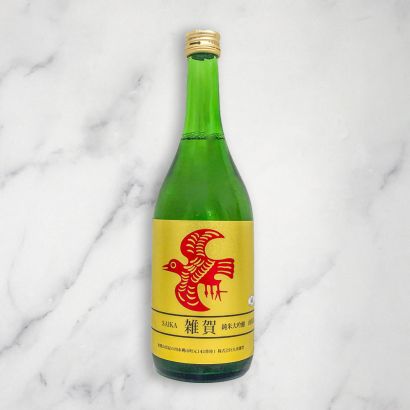What could be more tempting than a glistening platter of perfectly prepared sashimi? At Fine Food Specialist we stock a wide range of sashimi grade fish, which has been hand picked by experts, and identified as the very highest quality. But what is sashimi grade fish? How do you prepare it? And what are the most delicious ways of serving this delicacy? Read on for the Fine Food Specialist guide to sashimi grade fish.
What is sashimi grade fish?
Sashimi grade fish is fish that has been judged as very high quality. Since the fish will be eaten raw, any flaws or imperfections will be picked up; the flavour and texture must be flawless.
The word sashimi means ‘pierced body’ and it’s thought that this may come from the traditional method of harvesting, which involves piercing the brain of the fish with a sharp spike and storing it on ice. This means a minimal amount of lactic acid gets into the flesh of the fish, therefore preserving its integrity as much as possible.
Is sashimi different to sushi?
Yes, sashimi and sushi refer to different preparations of seafood. Sushi refers to seafood that is combined with rice prepared with sushi rice vinegar. Sashimi always refers to seafood that is served on its own.
What are the most popular sashimi grade fish and sashimi grade shellfish?
The most popular choices for sashimi grade fish are salmon and tuna, while some of the most popular sashimi grade shellfish are prawns, scallops and crab. At Fine Food Specialist we stock a wide range of both sashimi grade fish and shellfish, including different cuts of fish and different varieties such as hamachi.
How do you prepare sashimi?
Sashimi should be stored in the fridge until you are ready to use it, and if you are slicing your sashimi ahead of time, make sure to keep the slices refrigerated until just before serving. Raw fish should never be stored or left to sit at room temperature.
When slicing sashimi, the flesh should be cut against the grain, which will be perpendicular to the direction of the fish’s spine. Cutting the sashimi in this direction is essential, otherwise it will have an unpleasant, stringy texture. The sashimi should also be sliced thinly, so that it is delicate and easy to eat. Traditionally, the chef cuts the sashimi into different thicknesses according to the type of fish and its age, and the season.
What are the different cuts of sashimi?
Hira-zuruki or ‘flat slice’ cut: This is a common cut of sashimi, around 10mm thick and a ‘domino shape’. Tuna and salmon are most commonly cut in this shape.
Usu-zukuri or ‘thin slice’ cut: A very thin slice of fish, this style is commonly used for firm fish, such as bream.
Kaku-zukuri or ‘square slice’ cut: A cube cut of fish, around 20mm square.
Ito-zukuri or ‘thread slice’ cut: A fine, strip style of cut, often used for squid.
How should sashimi be served?
Sashimi is often served at the beginning of a meal as the flavour is delicate and serving it later can mean it’s overwhelmed by stronger flavours. Sometimes however, sashimi may be served later as a more substantial course, alongside rice and miso soup.
Sashimi is usually presented on top of a garnish, such as thinly sliced radish (daikon) or shiso leaves.
What are the essential accompaniments for sashimi?
Sashimi is often served with a dipping sauce, usually based around soy sauce. At Fine Food Specialist we have a range of soy sauces that are perfect for this, including some very special aged soy sauces, which really do the sashimi justice. How about treating yourself to a bottle of our kamebishi soy sauce? We have bottles aged to 2, 3 and 5 years to choose from - the depth and complexity of these soy sauces far outweighs that of regular soy sauce.
Other ingredients can be added to the dipping sauce too, such as very finely grated ginger, or garlic, making for the perfect salmon recipes. Chilli is generally not used with sashimi, however wasabi is very commonly used to bring some heat to the dish. Wasabi is a spicy green rhizome, which is finely grated using a special grater.
Sashimi Serving Suggestions from Drogo’s Kitchen
Salmon Sashimi with Hot Ginger and Spring Onion Oil
Salmon Sashimi with Sesame and Ginger Dressing
Spicy Obsiblue Prawn, Fennel and Grapefruit Crudo
Tuna Tartare with Finger Lime and Micro Herbs
Hiramasa Loin Sashimi with Lemon Balm and Red Butterfly Sorrel








